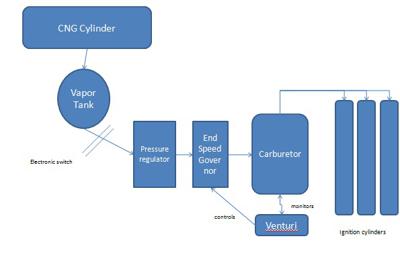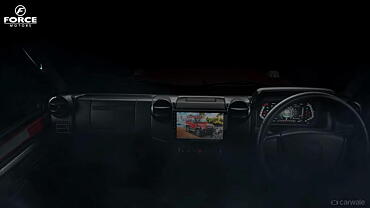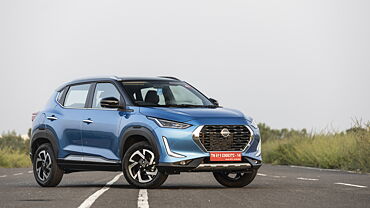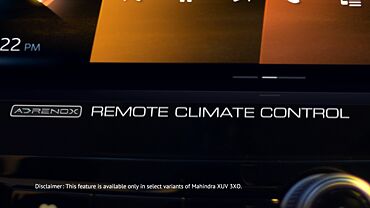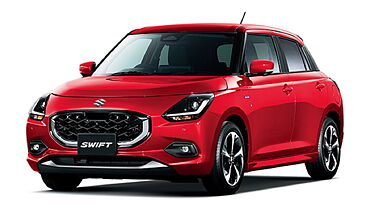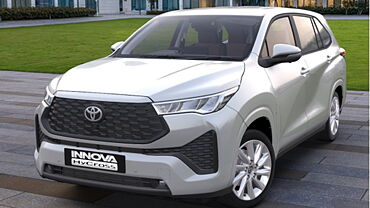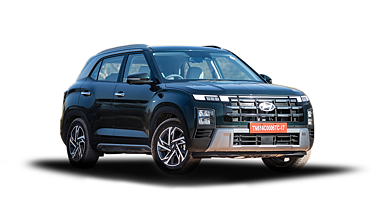Introduction
With the recent increase of price of petrol by Rs 5 and official notification that it will increase further shortly, there is an increased eagerness of car owners to go for CNG kit and LPG kits. In our question and answer section, questions as follows are received daily:
- Has anyone fiited CNG kit onto thir CRV? What make of kit & how much it cost? Are there any performance & safety issues after fitment of CNG kit?
- I recently bought New SX4 Euro 4. I wish to get CNG fitment done in this car. I am not sure if there are any advantages/ disadvantages of getting CNG fitment.
- I have decided to purchase a second hand SX4 preferably 2008 or 2009 ZXI Model and will get the CNG Fitment in it. Is my decision correctt?
We have earlier published several articles on the aspects of selecting the fuel type suitable for a buyer.
However, today we will address the concerns of someone who already owns a petrol car and is looking for a CNG kit. How does it work and how does it affect your car?
Workings of the CNG Engine
Theory
The working of a CNG engine is similar to that of a petrol engine. In the petrol engine, the car’s carburetor creates a mixture of petrol droplets and air which is then supplied to the inlet manifold of the car’s engine. A spark is then introduced, causing a controlled explosion which drives the engine.
CNG can be quite easily used in a petrol engine as well. In similar fashion as the petrol engine, when a CNG connection is made and given an inlet at the carburetor, the vapours of CNG (instead of droplets of petrol) get mixed with air and are then led into the combustion chamber, where the ignition process takes place as in the petrol version. A similar mechanism is employed in MPFI versions also.
Thus, a petrol engine can easily be ported to CNG as the combustion process is completely the same.
The body of research on petrol and diesel version engines is more advanced than on CNG engines. For example, detailed analysis of development of the combustion flame, travel modes, different mixture conditions etc. are available for the combustion process of petrol and diesel engines, whereas the same is limitedly available for CNG.
An important factor in an engine’s performance is the compression ratio. In a conventional petrol engine, the pressure of the fuel and air mixture is highest at the end of the compression stroke, which is further increased by the engine’s heat. As a result, the provision of spark leads to a rapid ignition. The high calorific value and energy density per unit volume of mixture leads to a powerful combustion, but adequate pressure is needed to ensure that enough fuel is available within that unit of volume.
If the engine is driven with petrol, droplets of petrol are introduced. However with CNG mode, the fuel component of the mixture is released in gaseous stage. In this case, the pressure becomes important to ensure enough fuel in the mixture. This is managed through temperature: a higher temperature of the fuel is desired, increasing pressure and thus ensuring adequate CNG quantity per volume of mixture.
Thus, in CNG there is a need of warming up of the engine so that there is enough heating of the fuel air mixture so as to allow for the start of combustion process. This is in fact the reason why in most of the CNG-kit fitted cars the engine is run for sometime in petrol mode and later switched over to CNG mode, so that the engine is warm enough.
While CNG is mostly used in petrol engines, it is an interesting fact that it can be used also in diesel engines with suitable modifications whereas LPG can be used for petrol engines only.
In diesel engines, CNG can be used solely as well a combination of diesel and CNG in dual mode. In dual fuel mode, the quantity of diesel injected is reduced drastically but used to initiate ignition and CNG is carbureted along with the intake air so that engine power is kept almost same. In single CNG mode, only CNG vapors are injected, that too via the air intake valve.
The latter also explains why we cannot have LPG diesel combination. LPG is in liquid form and would need to be injected through the diesel valve itself which poses various complications.
Versus the pure petrol car, a CNG equipped car adds a number of parts, including Cylinder, Vapor bag assembly, filling connection valve, Selector switch, Pressure regulators, carburetor, Ignition system, Venturi, and End system governor.
CNG Cylinder
These are high pressure cylinders designed for storage of CNG at a pressure of 200 bar. A typical tank capacity is 50 litres. The number of cylinders required depends on the vehicle. As the CNG cylinder stores the inflammable fuel, it is made of a strong material and safeguarded from shocks.
Vapor Bag Assembly
This is made of PVC and is designed to cover the gas outlet valve of the cylinder. It is tubular in shape and has a threaded flange at one end screwed on to the cylinder neck threads and a screwed cap at the other end to give access to the cylinder valve.
Filling Connection/Valve
This valve is used for filling high pressure gas from the CNG station to the CNG tank.
Electronic Selector Switch
This is used to change the fuel operation mode as desired.
Pressure Regulators
Two pressure regulators are used to reduce the gas pressure from 200 bar (in the cylinder) to just above atmospheric pressure before insertion the same into the carburetor.
Carburetor
This ensures proper proportion of CNG and air mixture before inserting into ignition chambers.
Ignition System
There is a change which takes place in the car’s ignition system also. A contact-less distributor ignition system with spark plugs is introduced in place of injectors. This is done to ensure a better combustion and only applies for single mode CNG cars.
Venturi
This is a gas and air mixing and metering device. It meters the gas flow proportionate to the engine speed and is located in the carburetor.
End Speed Governor
This is a special electric governor, which reduces gas flow at as a specified engine rpm is reached, as measured by the venturi.
The conversion then, of a petrol car to a CNG car, involves introducing the above parts into your car, and indeed it is what a CNG kit comprises of.
The following image shows the schematic flow of CNG in a CNG car.
Economics of CNG
A user typically will be inclined to use CNG to reduce his cost of running his car. Versus the reduced cost per kilometer, there is however an investment and maintenance implication. Let us take a look at the investment to run CNG and the benefits of the same.
Investment
When a user opts to implement a CNG kit in his car, the cost of the conversion kit will be around 38 to 42 thousand rupees. Even in company fitted CNG, we would expect a somewhat larger price hike versus the equivalent petrol version.
The investment is a onetime investment, after which the user can reap the benefits of the CNG.
It is important to note that a CNG's kit lifetime is about 5 years. Thus, at Rs 40,000 you will be incurring an annual depreciation of Rs 8,000.
Mileage and cost per KM and evaluation
To evaluate the cost of driving a CNG car, two factors are important. First of all, the cost of a unit CNG and then the mileage of the CNG equipped car itself. Note that CNG is measured in cost per KG, as CNG, being a pressurized Gas, will have a different volume of fuel dependent on the pressure applied.
The cost per KG of CNG varies from state to state. The present cost of CNG is around Rs 32 per KG. Generally a mileage of up to 12KMPL can be achieved in CNG mode, which will be a bit lower than the initial petrol car’s mileage.
Let’s take a look at the savings in ownership on conversion.
For petrol versions, we assume an average of 15KMPL, in which case, 12KMPL can be expected in the CNG mode.
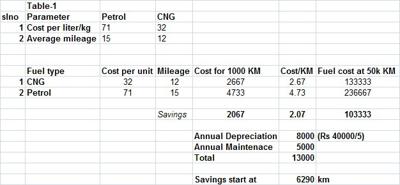
From cost analysis table, the difference in cost per KM turns out to be about 50 to 55 percent, a considerable saving indeed. This is what motivates people to go for CNG.
For CNG, though there are considerable gains in cost per km ,the actual profit starts after usage for around 30KM onwards, in view of the investment. By the time the car covers such distances there would be an increase in maintenance cost of the car, and hence the gains in cost of running the car would be somewhat offset.
Assuming a cost of Rs 13,000 per annum (depreciation and maintenance), one needs to drive around 6,500 KM (13,000/2,07) each year to get profit from the CNG kit.
Maintenance
The maintenance of a CNG car is similar to a petrol version in most aspects –since most all components are the same. Of course, particular attention has to be given for maintaining the tank, valves and pipe connection in a very good condition. As a result, the maintenance of a CNG car will be higher than that of a petrol car.
While using a CNG kit there exists an occurrence of problems such as starting problems and jerks. After a long term usage, the rings could get worn out, which results quickly into misaligned pressure of injected gas. The remedy is to get the rings replaced, which would mean a major repair. Though with developments of CNG kit technology, the problems have been eliminated to a large extent, still it does affect the engine compared to that of the single mode.
The main message in owning a CNG car is to give it for servicing at regular intervals, thus avoiding major repairs to your CNG kit.
Still, we can assume some Rs 5,000 incremental maintenance cost in owning a CNG car per year. With the investment, it means your operating expenses annually are Rs 13,000.
Safety and precautions
A major deterrent for people to use CNG in the past has been safety concerns. Let us take a look at the safety factor of CNG.
Though in general CNG fitted cars – be it company fitted or individually – are certified and RTO approved, there have been stray incidents of bursting of these CNG cars.
However, on inspection it has always been shown that that those accidents had occurred with domestic gas fitment, and not with kitted cars. It is clearly very dangerous to use domestic CNG cylinders for running cars – it’s not only illegal but can also turn out to be fatal. At the same time, clearly, there is no major safety concern as such when running a properly equipped car.
Nevertheless, the foremost thing to take care while using CNG is leakage. The source of leakage could be from the filter provided over the tank, pipelines etc . Generally, pipelines from the rear tank are taken through side panels inside the compartment, to avoid damage in pipe due to hitting of potholes, stones etc. Any regular maintenance carried out will involve a full examination of these components for leakage.
Note that CNG comes with an added odour. Hence, as precautionary measure in case of any smell, immediately disengage the engine to stop the flow of CNG and call authorities for immediate rectification of problem.
Driving Experience
Driving a car fitted with CNG kit though quite similar to a petrol car, comes with some interesting quirks and a certain procedure should be followed for better utilization.
First start the car with petrol and run for few minutes, so that the engine gets warmed up. Then switch off the petrol switch, so that petrol supply is cut off. Now the engine will run for a few minutes with petrol left in the carburetor. At that point, you can disengage the engine and switch on again with CNG connection and start the engine.
While driving with CNG mode, the engine performance won’t be as comfortable as with Petrol. You can feel a lack of power and pickup. However, the running of engine becomes smoother as the engine gets warmed up completely. The estimated loss of power in a CNG engine is about 10%, resulting in a reduction of top speed of 3% and reduced acceleration.
An important point to be kept in mind is that if you are going for long drives, ensure that the CNG tank is full and be aware of next CNG filling station available on route. Also, it will be good to keep sufficient store of petrol to use in case of emergency. However, in reality, in cities CNG is now abundantly available, and even in the rural areas, it is available regularly. This is also related to the huge number of rickshaws plying on CNG.
However, in general, except for some behavioral changes you need not be concerned too much with using CNG.
Environment
Another consideration in using CNG is the environment. In general, using CNG as a fuel is considered better for the environment. This is because the combustion of CNG is more complete and efficient than petrol fuel, which means that the amount of carbon monoxide and hydrocarbons is much less. The emission of a CNG engine would typically be just carbon dioxide and water, which are relatively harmless for the environment.
Warranty matters
With cost analysis one may decide to go for CNG fitment for a newly bought car, but the buyer also has consider other parameters including warranty coverage. Many manufacturers don’t allow for external CNG/LPG kit fitment. If this is the case, warranty won’t be provided for failure in key engine parts. Hence, before going for a kit, ensure whether the dealer approves or not.
A reason for the dealer to reject warranty is that they might want to retain profit by installing the kit themselves. They also don’t want to take the risk of replacing parts due to relative wear and tear.
Resale
Another disadvantage of fitting a CNG kit is the lower resale value. With the awareness of increased maintenance of vehicle after certain usage with LPG/CNG, buyers would doubt genuine condition of the car and think twice before going for the same. Also, the possibility of using vehicle with domestic CNG would be a cause of concern of the buyer.
Buyers will also have to consider the availability of Auto gas supply in their city or location of usage before going for the same and hence would tend to go for standard fuel versions. In other words, preference for duo version varies depending upon location and hence number of potential customers would be lesser.
At the same time, there will be a premium in the car due to investment in kit. This premium will be high in the initial time after purchase after the kit, but will diminish in value soon. Remember that the lifetime of CNG kit is about 5 years.
Getting a CNG car
Made up your mind to drive on CNG? There are basically two routes to do this – either buy a CNG car from the dealership directly, in which the car manufacturer has equipped the CNG – or get a kit separately to have installed.
Company Fitted CNG cars
With the success rate of CNG kits and growing demand for the same, manufacturers have realized importance of capturing the LPG market by coming up with their own ‘DUO’ version car, which give confidence to customer due to higher safety norms and warranty for the same.
As such, Maruti Suzuki has introduced duo versions of the 800, Omni, and Wagon R. Hyundai has the Santro and Accent in Duo versions, while GM has its Spark LPG , Beat DUO, and there is also Tata Motors’ Indica Xeta DUO.
The advantages of going for DUO version cars include safety, guaranty and warranty backup. In CNG kits fitted directly from suppliers, if any problems arise in the engine, dealers will service it. However, most of the time dealers reject to give warranty service for the self-kitted cars. Note that even in company fitted kits, the company warranty will be less than the normal warranty.
CNG Kit suppliers
There are a number of suppliers of CNG car kits. Auto gas India is one of the most famous gas kit suppliers in India, and they are offering government approved Lovato Kits from Italy. Haryana based Techlab Autogas also offers auto gas kits for all cars.
The most compelling reason to go for a kit like this, is in case you already have a car which you want to upgrade, or the desired car does not come with a factory fitted kit.
However, you must accept that dealerships may not service your car anymore, and potentially higher safety risk.
Conclusion
Using a CNG car has become a well known method of saving money spent on fuels. Huge difference in comparison with the petrol version justifies this, and it becomes even more pressing as petrol prices keep trending upwards.
However, considering the investment cost of around Rs 40,000 and the increased maintenance, a driver needs to make significant kilometers to have the financial benefit of CNG. Combined with the continuing safety, maintenance and warranty concerns, these are factors contributing to CNG versions not being as popular as petrol and diesel versions. Some hassles surrounding usage also deter people, such as less power and starting problems.
However, CNG as a fuel is very environment friendly, and in practice, the mental roadblocks in using CNG are not really significant.
Hence, for those heavy drivers who care about the environment, CNG is the way to go. However, you must ideally opt for factory fitted CNG, as kits have too many practical issues surrounding them.
If you already have a car which you want to upgrade, make sure you calculate whether it makes sense for you, and check out warranty issues. If this checks out, it is a wise choice and you will be a happier car owner.
Readers may also check out an earlier article we published, which advises on fuel selection.



